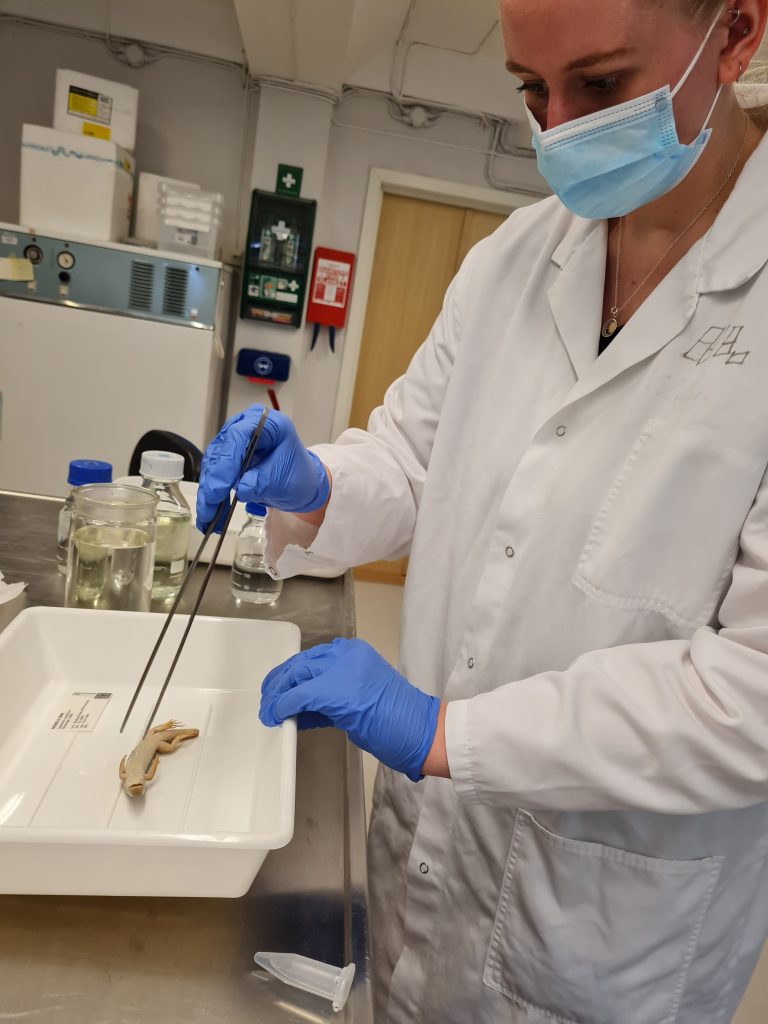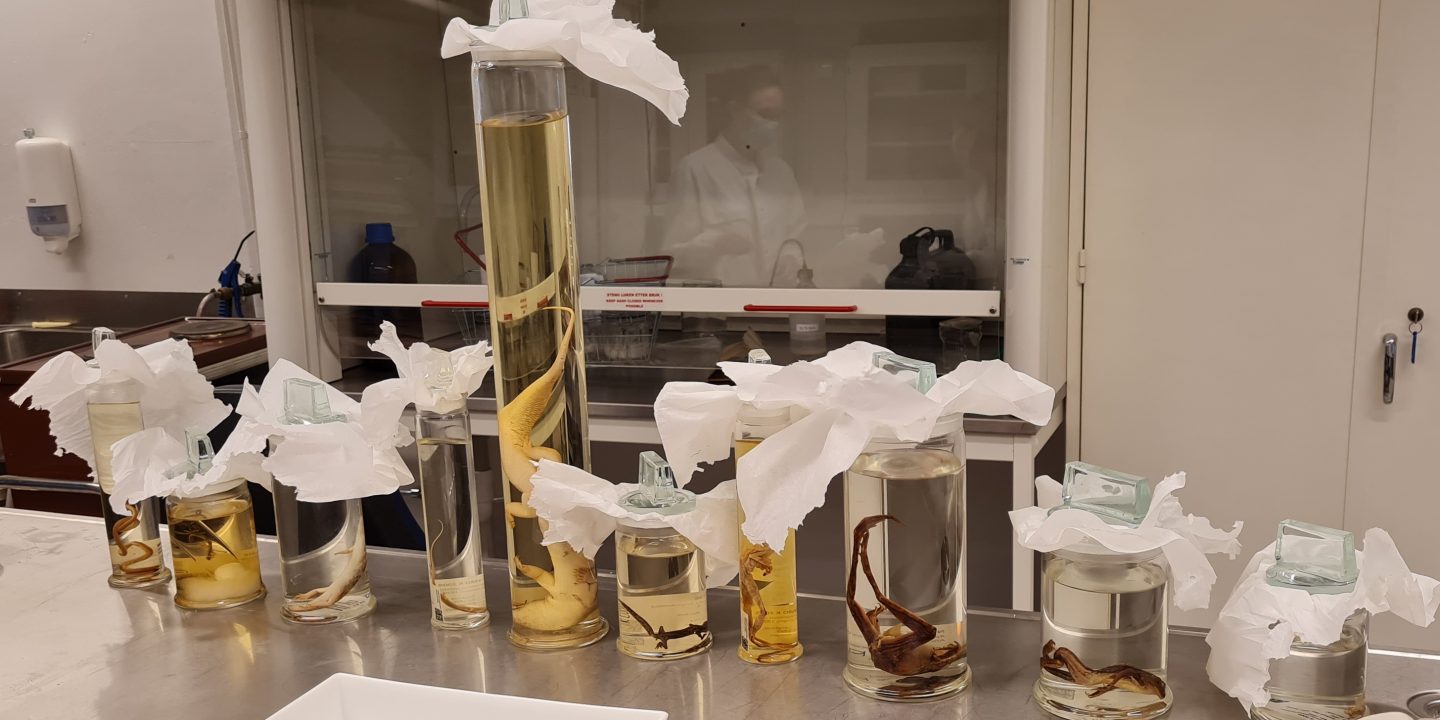The Covid-19 shutdown and restrictions halted any opportunities to learn about and contribute to on-going research at the University of Oslo (UiO). Because I’m (Pia M. Eriksen; Figure 1) considering a master’s degree in biological sciences, I have been planning and looking for ways to engage in biological research since beginning my undergraduate degree. So, when I came across the opportunity to spend six weeks during the summer, under the wing of a real-life scientist, I jumped at it. There were over 40 mentors and projects to apply for, but the one that caught my eye was Rita M. Austin’s museomic project, generating genomic reference sequences for the Natural History Museum’s (NHM) herptile type specimens.
Set at the NHM, the project combines many aspects and perspectives, including museomics, zoology, genetics, research design, bioinformatics, and an opportunity to contribute to scientific publications.

Project goals centre on ten, >100 years old herptile type specimens (see previous blog). A primary goal is to test a new extraction method optimized for sequencing formalin fixed specimens (Gould, Fritts-Penniman and Gaisiner, 2021). DNA extraction and sequencing optimizations are particularly necessary (and challenging) for NHM collections because most are preserved in liquid fixatives. While collected organisms are currently stored in ethanol (museum standard), historic preservation methods have used other fixative chemicals, with formalin (CH2O) being a go-to solution during the late 1800s and early 1900s (Musiał et al., 2016). Seven of ten of the herptile type specimens were at least partially formalin fixed. Another project goal is to test an in-house sequencing technique, which, if successful, will help rapidly provide initial project results. Lastly, specific to the type specimen species, we hope to get information about the historic genetic diversity of the organisms, helping to contextualize current species and environmental conservation efforts.
Alongside the herptiles, we have also been assessing younger (70 years versus the herptiles 100+), heavily formalin fixed tapeworm samples. We are additionally testing the sequencing process with modern hooded seal placenta samples (13 years old) – untouched by formalin. Having access to multiple samples of varying ages and fixation methods allows us to ask comparative questions such as “what is more destructive – invasive or potent: chemical preservation or age?”.
The most striking component of this experience for me has been the continual necessity for optimization and flexibility within the scientific process and molecular techniques, which is an interesting difference between the classroom and the lab. At each juncture, we take a step back to evaluate and consider our options before moving on. Critical thinking and asking tough questions that will affect subsequent processes are skills often employed. For example, during the multiple DNA quantification steps we conducted post cleaning and processing, information about how much DNA our samples have is gained, which informs the later molecular steps. Too little DNA, and we would consider removing a purification (cleaning) step to remove short DNA fragments and unused reagents – this is especially important for older samples which already have shorter DNA fragments. Care is needed to preserve as much of the DNA as we can for these historic museum samples. On the other hand, we had much more DNA for the modern hooded seal samples, which prompted us to dilute the samples to control the amount of DNA being sequenced. The next step is to start analysing the data we’ve gathered.
I’ve learnt so much throughout this project; I’ve conducted research scraping together as much credible information about our 11 herptiles as I can, I’ve gotten to try cutting edge techniques, and I’ve been surrounded, not just by my wonderful mentor, Rita, but a whole host of colleagues in the FEZ group who have been gracious enough to welcome me and talk about themselves, their experiences, and their work, while also answering all my questions. Suffice to say, this experience is doing a great job igniting my scientific curiosity.
References/ Further Readings
Gould, A. L., Fritts-Penniman, A. and Gaisiner, A. (2021) ‘Museum Genomics Illuminate the High Specificity of a Bioluminescent Symbiosis for a Genus of Reef Fish’, Frontiers in Ecology and Evolution, 9. doi: 10.3389/fevo.2021.630207.
Musiał, A. et al. (2016) ‘Formalin use in anatomical and histological science in the 19th and 20th centuries’, Folia Medica Cracoviensia, 56(3), pp. 31–40.
![]()

1 Comment on “Old Specimens, New Scientist: A Student’s Account of Sequencing Historic Herptile Type Specimens”